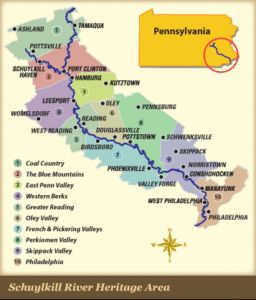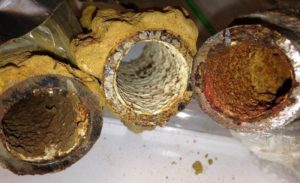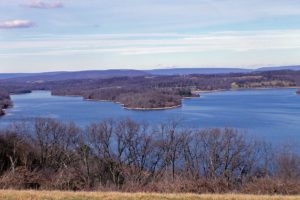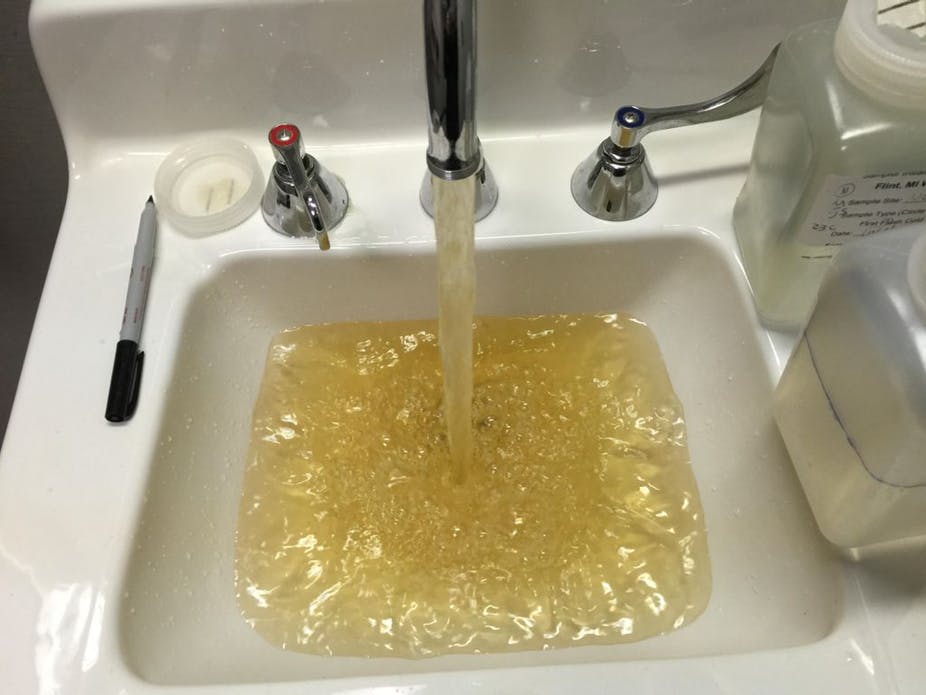I began asking about the water I drink after a trip to Miami, FL. Our local water in Reading, PA never bothered me. In fact, I thought it tasted pretty good. I grew up in Southern California, where the water is undrinkable. We always bought Sparkletts bottled water (the green cap with Fluoride for our teeth J). But the water in Miami was so vile tasting I spit it out of my mouth at a restaurant. And think how many people in the area were consuming it every day.
After that trip to Miami that I finally had had enough and would no longer drink it our local water. We had previously affectionately called the tap water Schuylkill Punch. We laughed during droughts when people would say things like, “Be sure to flush twice. Philly needs the water.” It reminds us about who is living upstream that we are drinking from.
 Water has been in the news in the past couple years because of the tragic water supply in Flint, Michigan. The water is polluted. The aging public water system caused it. Most of the city’s pipes are over 50 years old and are made with Lead. The City knew it was in major need of an update. The Republicans and Democrats are blaming each other. The biggest problem is that the city has not invested in the upkeep of their water supply. Now everyone must drink bottled water because what comes out of the tap is completely contaminated. And who knows for how long.
Water has been in the news in the past couple years because of the tragic water supply in Flint, Michigan. The water is polluted. The aging public water system caused it. Most of the city’s pipes are over 50 years old and are made with Lead. The City knew it was in major need of an update. The Republicans and Democrats are blaming each other. The biggest problem is that the city has not invested in the upkeep of their water supply. Now everyone must drink bottled water because what comes out of the tap is completely contaminated. And who knows for how long.
Here in the USA, we take things like this for granted. Most areas have public drinking water available. Most of us never question it. We turn it on. We shower, we wash our hands. We wash our dishes, we cook we wash our clothing. And we drink it.
In other parts of the world, this is obviously not so. Industrial pollution, over population, farming runoff. You name it. I always think about the Ganges River – where millions of Indians make a pilgrimage each year to bathe in its holy waters. But they should pray hard before-hand because the water is nasty polluted with Human waste.
 The failure of the Flint water supply is one of those examples of how your life can be turned on its head. In Flint, it was caused by bad government, misappropriation of taxes, call it what you want. But the people had the expectation that their water was safe and would continue to be safe. Now that it has happened – and it was near an election year, it made national headlines. For the people, it is the apocalypse. They must drink bottled water. They must decide whether they want to try cleaning their clothing or their bodies or their lives with the water that comes to their home.
The failure of the Flint water supply is one of those examples of how your life can be turned on its head. In Flint, it was caused by bad government, misappropriation of taxes, call it what you want. But the people had the expectation that their water was safe and would continue to be safe. Now that it has happened – and it was near an election year, it made national headlines. For the people, it is the apocalypse. They must drink bottled water. They must decide whether they want to try cleaning their clothing or their bodies or their lives with the water that comes to their home.
Consider how many other municipalities have had problems with their water that we never hear about. California made headlines after the fact in Hinkley – where the water supply (and the air) became contaminated with Chromium. It took an unlikely lawsuit and a paralegal named Erin Brockovich to bring peoples’ attention to it. And unlike Flint, where the water came out of the tap looking like it came out of a swamp, Hinkley’s water looked clean. It was the cancer that made people question it.
What do you know about your own water supply?

I began this mentioning that when I moved to Pennsylvania, I thought the water tasted pretty good. The comparison was the swill that was aqua ducted from Mono Lake, up in the Sierras, down to the LA Basin. And with all the traveling, all the filtering, all the chlorine and other chemicals to make it clean enough to drink, it left much to be desired.
A little research here in PA told me most of our water comes from the Schuylkill River at some point. It is re routed through a couple lakes, piped all over the place, filtered Chlorinated, fluoridated and then pushed through our pipes. For our municipality, the water comes from the Tulpehocken Creek, downstream from Blue Marsh Lake. It draws directly from the local watershed and not necessarily from the sewage treatment plant north of here – isn’t that something to be proud of. But we do get farm runoff. And remember the name of that lake includes the word “Marsh.” Funny thing is that the Tulpehocken creek, about a mile past our local water supply intake, empties into the Schuylkill River. The water we get is at least that much more pristine.
For homework, consider where your water comes from.
This is usually easy to find out.
The information about my local water was just a Google search away. The Website for our Borough noted the Water company that provides our water. That water company’s website has an annual public disclosure statement telling the sources of the water as well as results of their testing for purity.
And for this, governmental agencies are very good. They go out of their way to test and show results in ways that will make them look good. They set the bar and stay under it. This does not mean that our water is ACTUALLY clean and safe. Just that they can prove it following the EPA guidelines and standards. They admit to including additives (Chlorine and Fluoride). They test for the bad things (Lead, Chromium, Nitrates). They publish it for all 2 of us whoever look at it online (which is about two more people than actually went to their offices to see the test results that they were forced to publish before.
- Find your water source
- Review the test results for your water supply
- Question their testing techniques
For my family and my garden, I want to know what goes into our bodies. And stay tuned for more discussions about water. It is somewhat of an obsession of mine, and there is a lot I want to visit.
